How to Safely Remove Damp and Mould From Ceilings
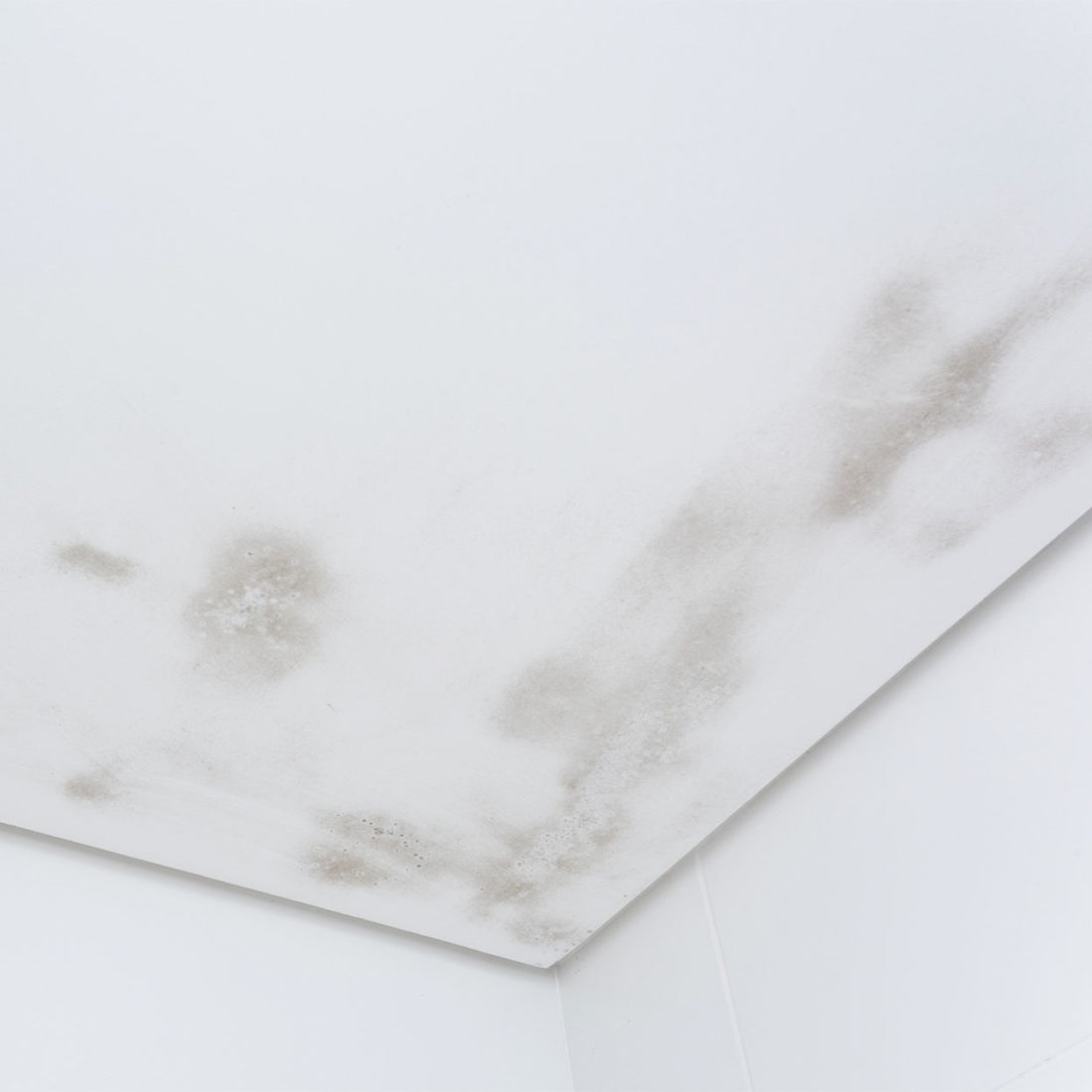
We’ve all been there: you notice the first little dark patch in the corner of your ceiling, and next thing you know, you have a horrible growth of fuzzy mould spreading rapidly through your room. This step-by-step guide will teach you ways to remove damp and mould from your ceiling effectively.
Mould is a fungus that typically grows on ceilings or walls (though it can surprise you in other locations), usually due to excess moisture in the air, or hot air coming into contact with cold surfaces. Mould is unsightly, spreads quickly and can even be dangerous for you to inhale. All hope is not lost as with the right DIY methods, you can get rid of mould in your home.
Read on to discover everything you’ll need to remove and prevent mould in your home.
Identify the cause of the mould
In order to remove dampness and mould, it is vital that you identify the cause of it. So, what causes dampness on walls and ceilings? There can be a few different culprits here, but the main offenders include:
- Too much humidity in the air
- Condensation and dampness on walls and ceilings
- Hot air coming into contact with cold or damp surfaces
- Limited light
If you think the mould might be caused by contaminated water or sewage, this is a serious issue so you should call a professional immediately. Fear not, however, as you can deal with most mould yourself.
How to prevent mould on bathroom ceilings and elsewhere using ventilation
Humidity and condensation create dampness, which as we’ve learned is one of the main causes of mould. Humidity is often caused by showering, ironing, cooking, or drying clothes and towels in an enclosed space.
Ventilation is crucial for maintaining normal humidity levels in a room, so be sure to air out the room at least once daily, and immediately after showering or cooking. Dry clothes outdoors if possible, or in the most ventilated space you can find.
How to fix a damp ceiling
It’s possible that your mould problem is a structural one – you may have a consistently damp ceiling which will allow mould to keep returning. Rising damp on lower floors is also possible, so keep an eye on the lower half of your room, too!
Managing the problem via correct ventilation will help in the short term, but it can be worth looking into longer-term solutions like insulation to stop the dampness and mould from forming entirely.
If you notice light brown stains forming around the damp, it’s likely that you may have a leak. In this case, you’ll need to consult a professional as soon as possible.
How to get rid of ceiling mould
So, you have a mould problem. Here’s how to fix it.
Make sure the room you’re working in is well ventilated, and protect yourself with a facemask to avoid breathing in any dangerous spores (they can cause some nasty respiratory problems or trigger adverse reactions). Wear goggles to protect your eyes and gloves to avoid any harm or irritation to your hands.
Stock up on a few clothes, too, so you can regularly swap them out for clean ones and rinse used ones thoroughly. This will help prevent the mould from spreading further.
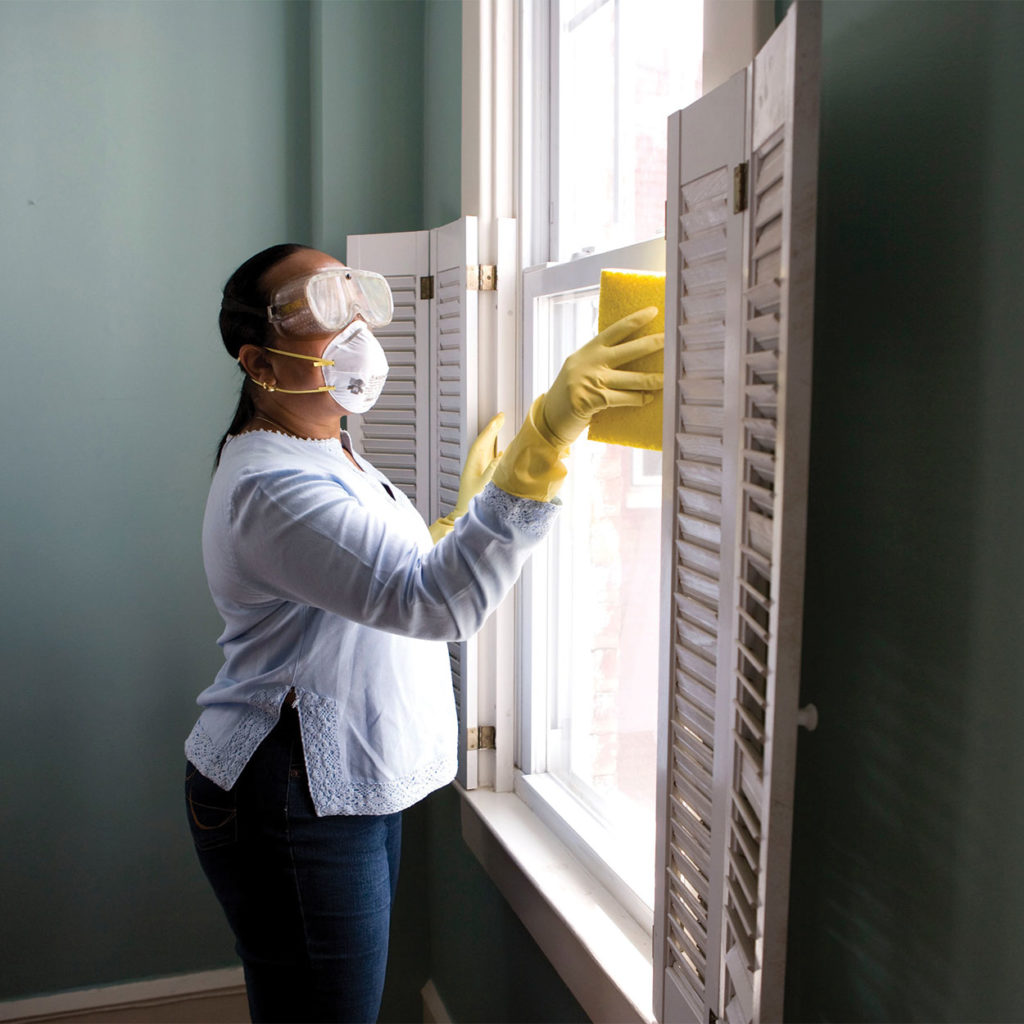
Tools for the Job
- A facemask, goggles and gloves
- A bucket or basin
- Some water
- A few pieces of cloth
- You may need a ladder (if so, make sure it’s steady)
How to Remove Mould from a Ceiling with Vinegar
Natural, safe and environmentally friendly, vinegar is a great option for removing mould. Here’s how to clean mould off a ceiling using a vinegar and water solution.
Step 1
Mix some white distilled vinegar with water. Put some into a spray bottle or on a cloth. Apply it to the mould.
Step 2
Leave it for an hour, then rub the area again with a cloth and plain water.
Step 3
If there is any stubborn mould, use a brush to wipe it after applying vinegar. Vinegar is less harsh than bleach, so it’s less likely to damage surfaces.
Step 4
Use a dry cloth to absorb any excess moisture. Open windows and doors to dry the room and remove any smell.
Step 5
Regularly spray vinegar on any areas prone to mould to prevent regrowth.
How to Kill Mould on a Ceiling Using a Bleach Solution
Using a bleach solution is one of the most effective ways to kill mould on a ceiling.
Step 1
Mix one part bleach to ten parts water. Be careful not to use too much bleach as it can damage your ceiling or walls. Wear gloves and goggles.
Step 2
Dip a cloth in the solution and squeeze to remove excess water. Wipe the mould, dipping the cloth again for each section.
Step 3
Dip a small brush, such as a toothbrush, into the solution. Use it for areas that are difficult to get to, such as corners.
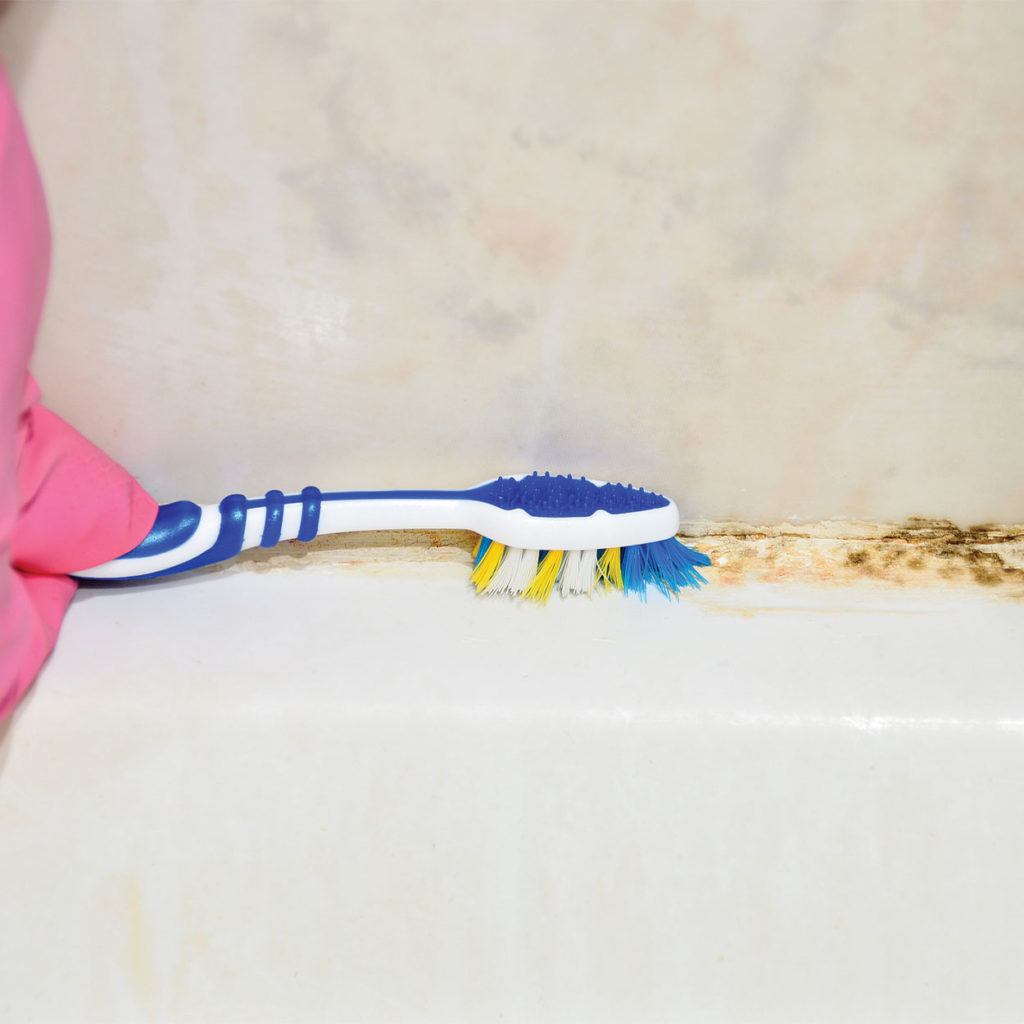
Step 4
Apply bleach solution again the next day. This will help to prevent regrowth.
Alternative solutions
If you don’t want to use bleach, there are some alternatives:
- 3% hydrogen peroxide spray
- Borax mixed with warm water
- One tablespoon of baking soda mixed with a cup of warm water
How to Get Rid of Ceiling Mould with a Specialist Spray
Specialist mould sprays cost a little more than DIY solutions, but they’re by far the most effective option for getting rid of mould fast, or for cleaning the strong or persistent mould.
Step 1
Check how strong your spray is before using it. Follow the instructions. Don’t use too much as it can mark your ceiling.
Step 2
Spray directly onto the mould from about two inches away.
Step 3
Leave the spray to work for thirty minutes before cleaning it with water and a sponge.
How to prevent mould on a bathroom ceiling
Wondering how to get rid of dampness on your bathroom ceiling? Read on.
How to get rid of dampness on a ceiling using an extractor
The extractor fan is one of the most useful methods for how to treat mould on a bathroom ceiling. It helps to ventilate the room and reduce humidity in the air. If yours has a timer, leave it on for twenty minutes after showering to help ventilate the room.
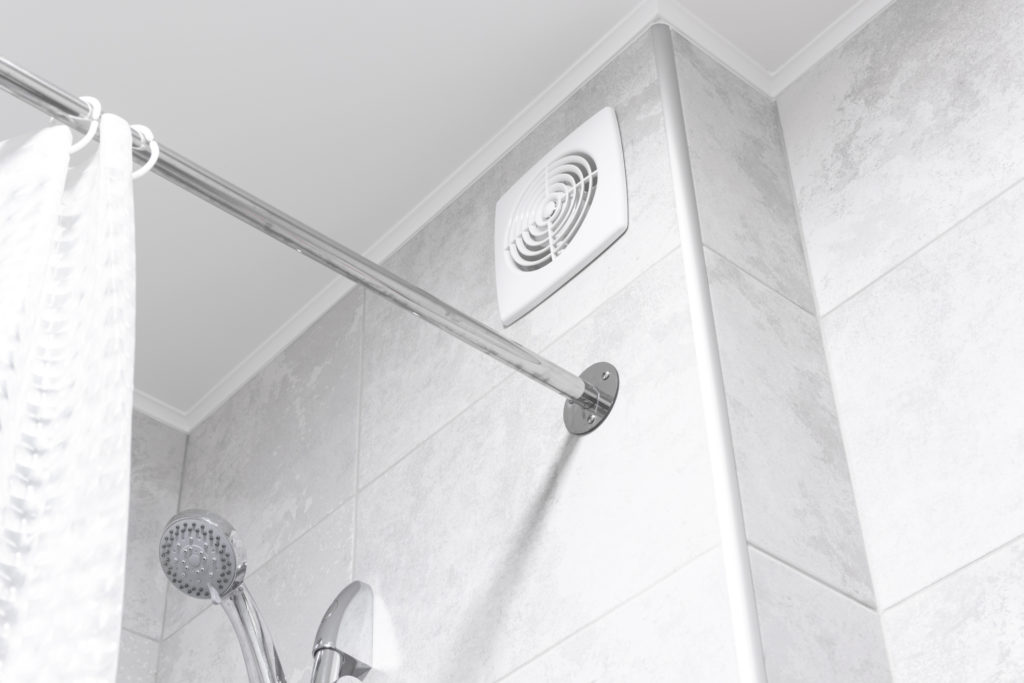
If you have a lot of dampness in a room, you can buy or rent a dehumidifier. This is a very effective way of removing moisture from the air.
Preventing mould from returning
You’ve managed to remove all the dampness and mould, so don’t let your efforts go to waste. Here’s how to prevent mould on a bathroom ceiling from returning.
Vacuum
Vacuum the room to make sure any spores or residues are removed. Any left behind may spread and create more mould.
Use specialist products
Use mould-resistant paint or mould-inhibitor mixed into the paint in your bathroom to prevent any mould from returning after you’ve cleaned it all off.
Drying
Don’t dry clothes or leave damp towels in your bathroom. This will add to the moisture in the air. Dry them in a well-ventilated room or outdoors instead.
Insulation
Add insulation in your bathroom or any colder rooms in the house. This will keep surfaces warmer and less prone to mould.
Let in the light
Mould usually grows in dimly lit areas. Keep windows clean and unblocked to allow natural light into the room. In a windowless room, add more artificial lighting. This will also increase the temperature in the room, which will help to prevent mould.
FAQ
Still wondering how to get rid of mould fast? Our FAQs will have you sorted in no time.
Why do I have mould on my ceiling?
Mould grows on ceilings when humid air meets cold surfaces. It means the room needs better ventilation.
How to get rid of mould on a ceiling in a bedroom?
If you have mould in a bedroom rather than a bathroom, use a fan or dehumidifier to reduce dampness in the room. Apply one of the products or solutions described above to the mould.
How to cover mould on ceilings?
When you encounter mould on your ceiling, you may want to cover it up. But simply painting over it will only let the mould spread. Use a specialist damp seal to keep mould limited to one area. This is how to cover mould on a ceiling in an effective way.
How to get rid of damp stains on ceilings?
Use one of the solutions described above on the stained area. When you have fully removed the mould, use mould-resistant paint on the area.
So, now you know exactly how to deal with that pesky mould problem in your home, and to stop it from ever coming back. All that’s left is to stock up on some cleaning supplies (and plenty of elbow grease) and get cleaning!
Stock up on DIY and Cleaning materials now!
These methods serve as a guide only. We encourage you to take full caution when undertaking any project within the home.
Sean Hyland
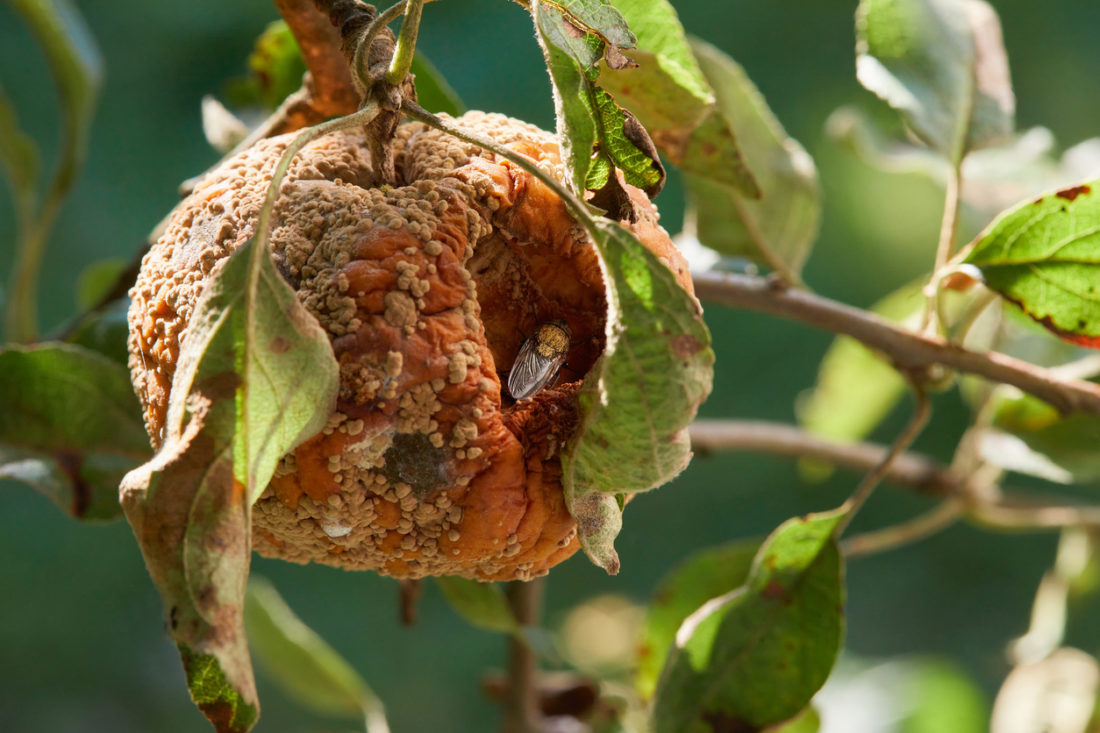
- Lawn & Garden
Everything You Need to Know About 9 Most Common Plant Pests and Diseases
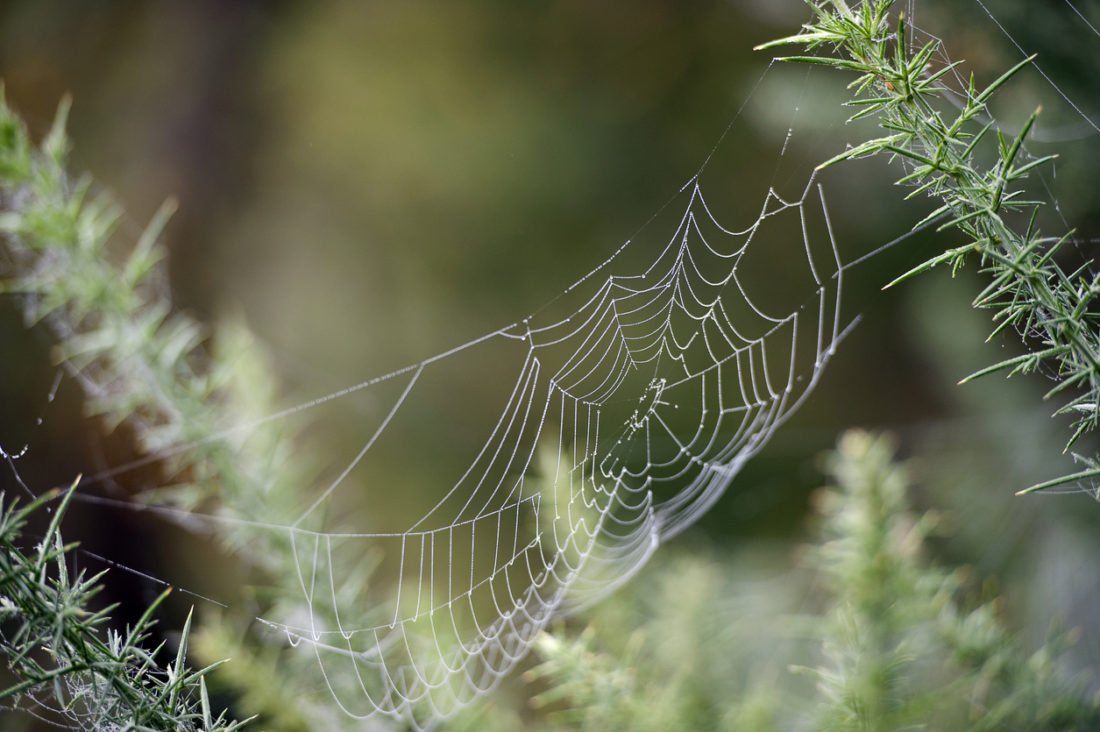
- Lawn & Garden
How to Get Rid of Ants, Flies, Spiders, and Mice: The Ultimate Guide to Home Pest Control
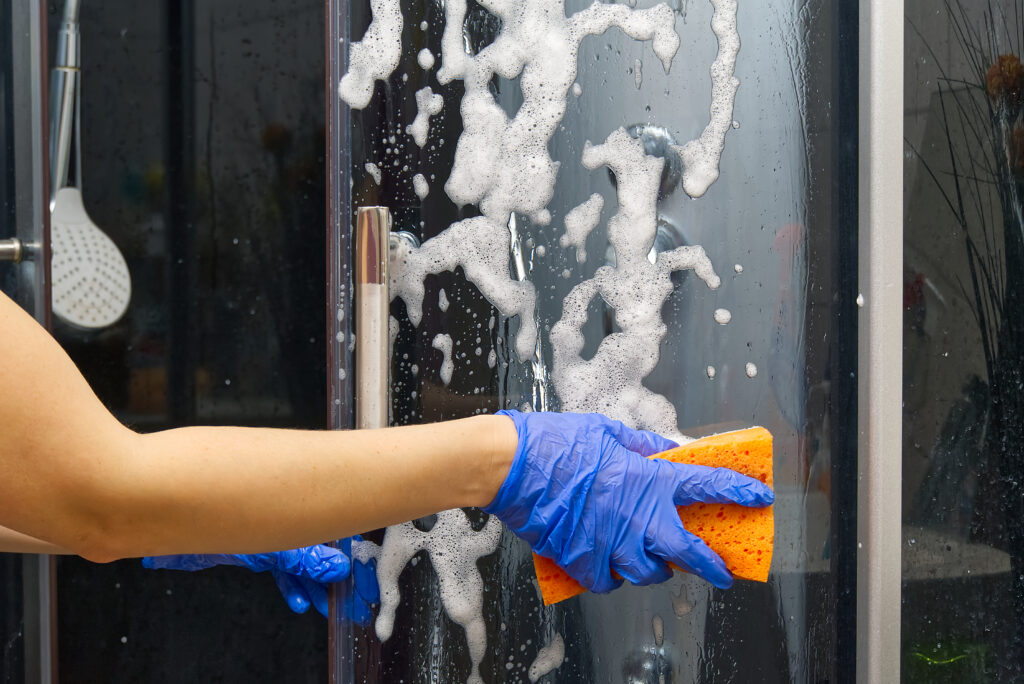
- DIY & Building,
- Bathroom & Plumbing
How to Clean a Glass Shower Door: A Step-by-Step Guide
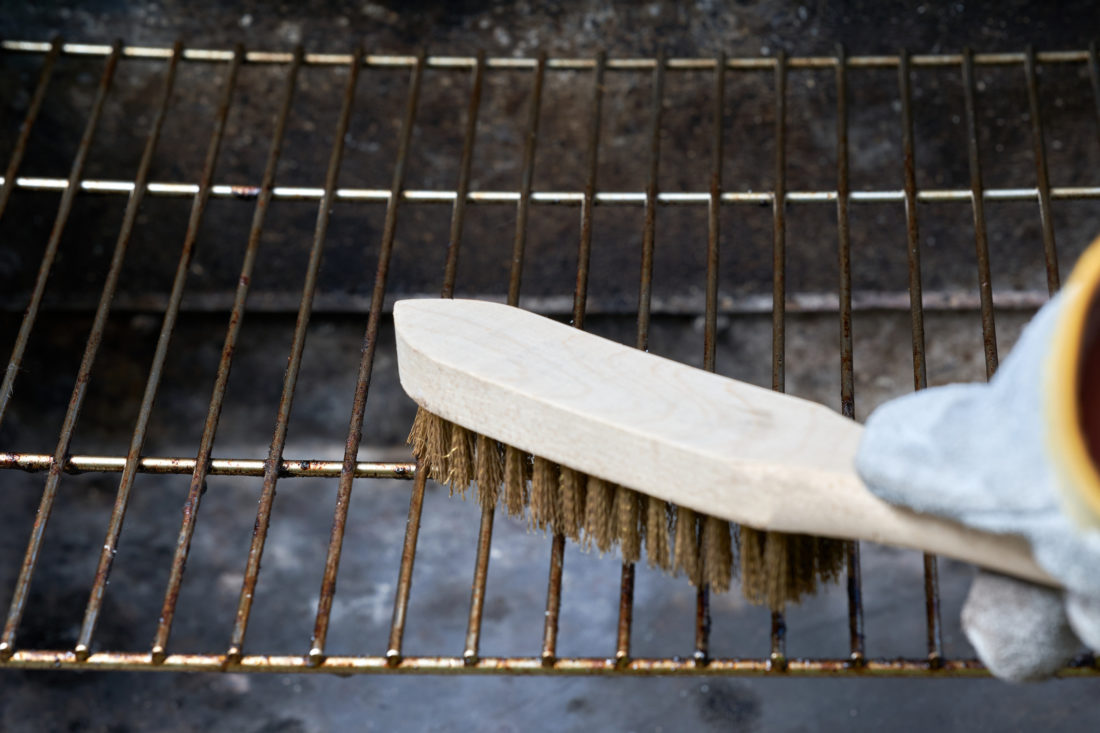
- DIY & Building
How to Remove Rust From Just About Everything
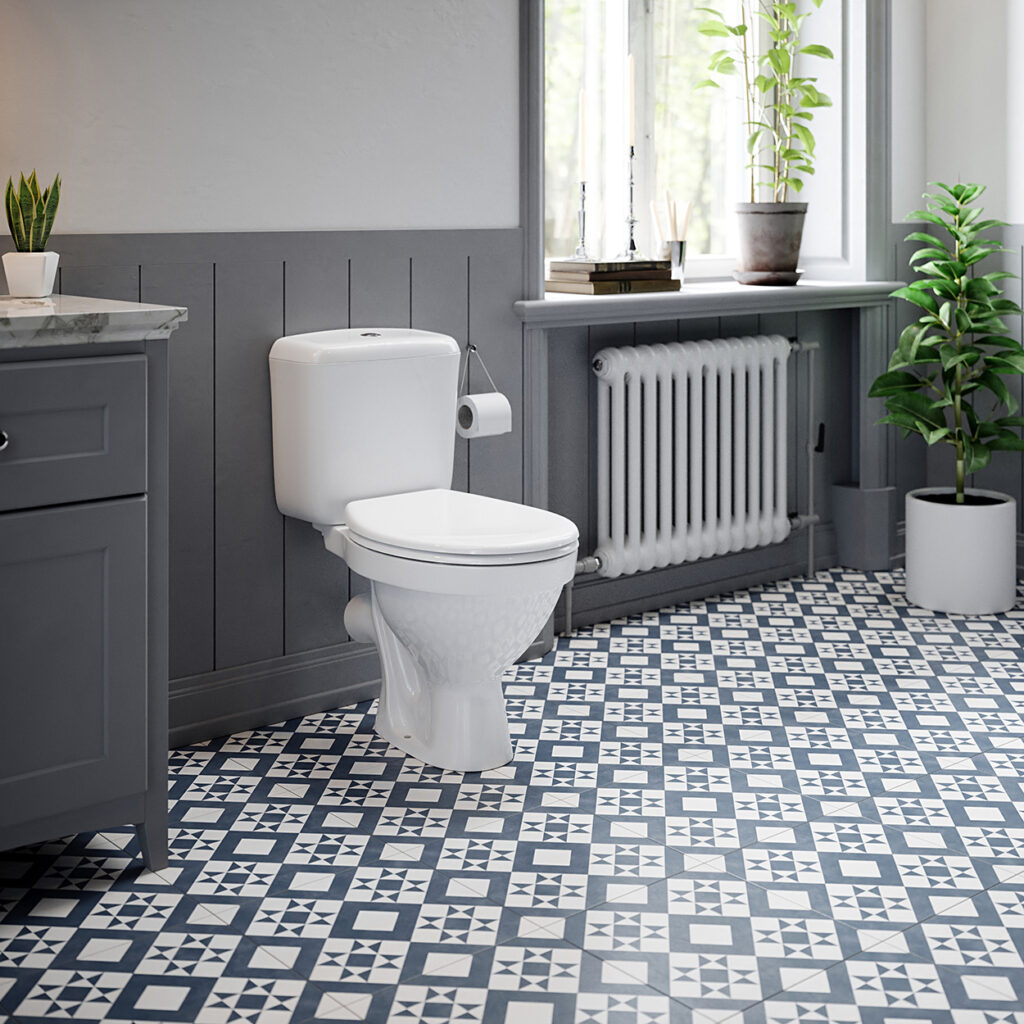
- DIY & Building,
- Bathroom & Plumbing
How to Replace a Toilet Seat
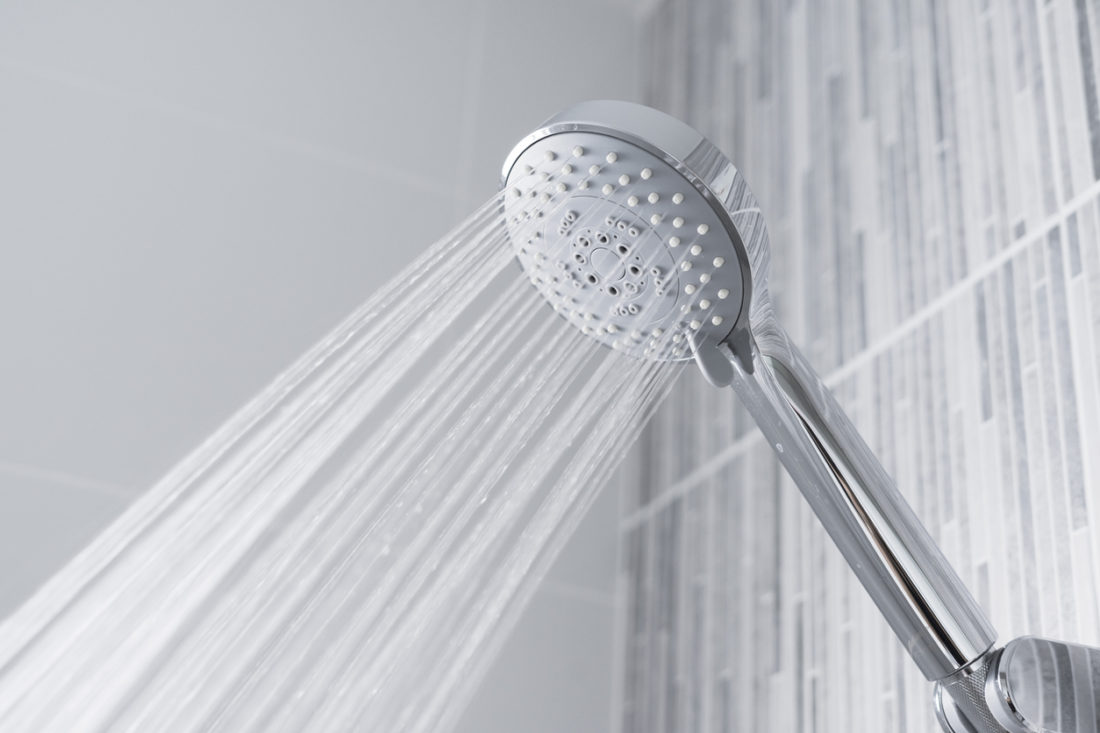
- DIY & Building,
- Bathroom & Plumbing